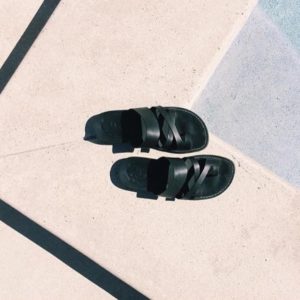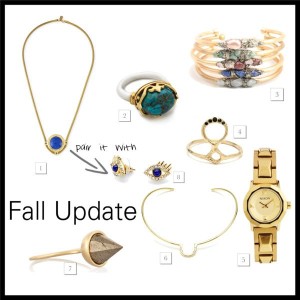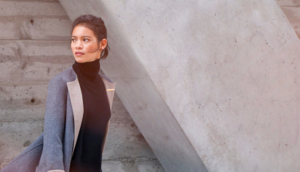With the help of things like social media, fashion journalists, and fashion-driven NGOs and advocacy groups, more people are becoming aware of brands that abuse animals and people in order to make their clothes. With research more readily available and consumers starting to change their habits, businesses are rethinking how they produce their clothing and accommodating today’s ethics-obsessed consumer.
While this is positive, information about brands can still be hard to find and some brands use our good intentions to mislead us. So that begs the question: Do you know how to do your research so you can shop in a more informed and empowered way?
When it comes to cruelty-free clothing, there are many different aspects of the manufacturing and supply chain process to double-check. But there are a few easy things you can do to learn more about the brands you’re already buying from and, potentially, discover some new ones. Keep learning and keep questioning and, eventually, these decisions will become second nature. Shop confidently, and cruelty-free! [/vc_column_text][/vc_column][/vc_row][vc_row][vc_column][vc_column_text]
First Up: Research What You Find
A sign may tout that a shirt is ‘eco’ or ‘artisan’ but these terms have been so overused in marketing lingo that they’re completely futile. A single term isn’t enough information to educate customers about what went into making that shirt. Tags are mostly vague (especially in the US due to lack of regulations) but you can still look for two indicators: what the garment is made of and the country of origin.
Do, however, keep in mind this the country of origin does not tell the full story. Fashion supply chains are spread wide across the globe and most brands go to multiple sources (i.e. they may get their buttons and zippers from China, source their cotton from India, and produce in Vietnam because each of these countries has the cheapest price for these products or services). Also, if the garment says ‘Made in USA’ that may only be for the final origin of the product.
Again, there is so much room for misleading the consumer. If you’re curious to learn more, you can tweet to the brand or post on their Instagram page. Try using a widely-accepted hashtag like #whomademyclothes to help flag your question. If you get overwhelmed, try buying from a brand on The Peahen’s shopping guide. They’ve all been pre-approved and researched for ethics. Or check out these other resources for learning.[/vc_column_text][vc_column_text]
Look for the “Fair Trade” Mark and Labels
Clothing labeled “Fair Trade” means the company that made the clothing pledged to protect the rights of farmers and production workers. Companies often take advantage of these production workers – not only during the process of harvesting and trading off their products to the companies they grow for, but also when they sign up for the job. Fair-trade efforts ensure workers get the compensation they deserve, and they have the same rights as traditional employees.
Besides the fair trade mark, there are multiple kinds of labels that will be on products produced with cruelty-free ethics in mind. Brands with a special focus on this kind of production process will make sure their customers know what they’re buying is safe. Some examples of labels you might find on different kinds of products might include:
GOTS
The Global Organic Textile Standard connects customers with certified businesses who operate with ecological and social responsibility in mind. Their website keeps an updated list of approved businesses for easy accessibility.
Beauty Without Bunnies Program
This company places a sticker on cosmetics and household products that have been made and tested without the use of bunnies and other animals. They’re PETA verified and easily spotted because of their bunny’s big, pink ears.
Vegan Society Trademark
The Vegan Society labels any product that wasn’t made with animal product or by-product, or tested on animals. You can always ask the company you’re shopping with if they can verify this trademark, as they’re supposed to be able to produce documents with verified statements from the manufacturer.
Leaping Bunny Symbol
Products with the Leaping Bunny symbol were made by companies that did not conduct or commission animal testing. To use this symbol, companies have to commit and pledge to the Leaping Bunny standards and are audited every three years.
No Label
Sometimes you may find yourself picking up a product or piece of clothing that doesn’t have any visible labels on the front. That doesn’t mean it isn’t ethical. It could be that it’s an artisan brand working directly with makers but they just don’t have the funds to buy into expensive labels. In these cases, it’s good to check the tags or any labels on the bottom of the product about their place of origin. And don’t fear to ask the business owner tough questions. If they can tell you stories about their garment workers or know the inner workings of their production that’s often a good indicator of transparency too. [/vc_column_text][vc_images_carousel images=”3209,3210,3208,3207″ img_size=”medium” css=”.vc_custom_1521494957356{padding-left: 250px !important;}”][/vc_column][/vc_row][vc_row][vc_column][vc_column_text]
Check How It’s Rated
Use the latest Fashion Transparency Index to see if the company you have in mind is rated highly or not. This index is updated yearly, and covers many things like how a business treats employees and their overall environmental impact. Checking your favorite brands against this index could save you a lot of time while you’re out shopping. You’ll be able to skip the mobile researching and just enjoy trying new clothes on.
When you’re out around town, it might be easier for you to check a product on an app instead of searching the internet on your phone screen. There are some fantastic apps available for free that will guide you in your search for ethical products, no matter what you’re shopping for:
Good on You
An ethical fashion app that checks any brand you have in mind for its impact on people, animals and the planet. They’ll be rated for easy readability and the app will suggest better brands with similar products that you’re looking for.
GoodGuide
An app that takes advantage of the ability to scan barcodes from your smartphone. Hold up a questionable product, scan its barcode and GoodGuide will show how scientists have rated its social, health and environmental impact. With over 250,000 products logged, you’ll be able to find most things easily.
Free2Work
Another option for those who like the idea of scanning barcodes. It will pull up all the responses from the brand you’re interested in to show you how they approach forced and child labor practices. It’s simple to read because of it’s A to F scale.
DoneGood
Works as both an app and an internet browser plugin for those who do their shopping on the go. It’ll instantly show the major brands you’re used to seeing and then compare them to smaller brands
aVOID
A plugin is for those who don’t mind searching the internet while shopping. You might want to look something up on your tablet, so use aVOID on your preferred internet browser and it will show you an alert if any businesses you’re shopping with are associated with child labor.[/vc_column_text][/vc_column][/vc_row][vc_row][vc_column][vc_column_text]
Consider the Environment
Look into your favorite clothing companies to see if they’re using eco-friendly fabrics. Check if they were grown with pesticides and/or growth formulas. This information won’t be on clothing tags, so you’ll have to do the research on your own time [Hint: these are great books with information on this]. It’s important because harmful chemicals in the farming and production process get absorbed and distributed through the final product, so you’d be wearing something that harms the planet and your health.
If you’re questioning the environmental impact of a piece of clothing, look at what it’s made of and refer back to the Global Organic Textile Standard’s list of approved certifiers. This list will show you all approved vendors for materials and products, so you don’t have to sweat it. If you get overwhelmed or confused, you can always contact the brand or company you have in mind. They should candidly answer any questions you have. If they don’t, vote with your dollar elsewhere. [/vc_column_text][vc_column_text]Buying cruelty-free clothing doesn’t have to make shopping harder and less enjoyable for you. It also isn’t as challenging as it seems! All the work you have to do is at the very beginning.
Research your favorite companies – and possibly some new ones – to see if they have cruelty-free production processes for everything from how they grow their crops to how they treat their farmers. Once you know where to go, you can go back to shopping for style while knowing you’re supporting ethically sound businesses.[/vc_column_text][/vc_column][/vc_row][vc_row][vc_column][vc_separator][vc_column_text]Emily is a sustainability blogger interested in helping others be kind to the planet. She is also the editor of Conservation Folks.[/vc_column_text][/vc_column][/vc_row]




